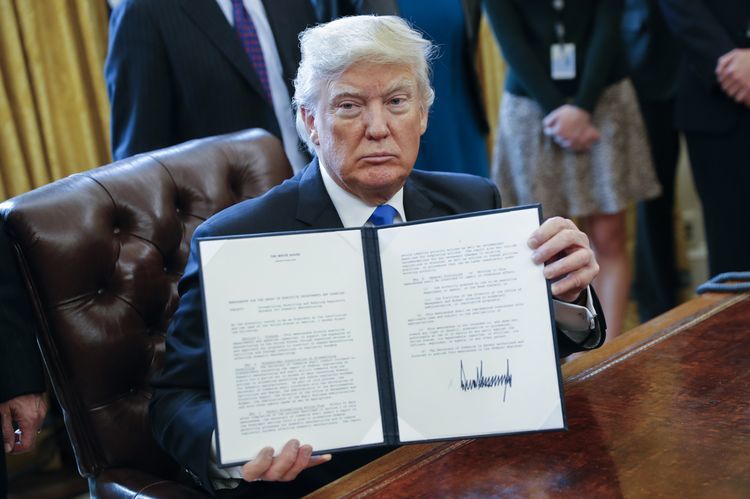
President Donald Trump started a tug of war with the oil market and lost the first round.
Hedge funds extended wagers that oil and gasoline prices will rise days before Trump blasted OPEC on Twitter for making oil prices “artificially Very High.” They were vindicated by a second straight week of gains that threaten to wipe out some of the household savings from Trump’s tax cuts.
“Gasoline prices are rising in the U.S. ahead of the summer driving season and he wants someone to blame,” said Phil Flynn, a senior market analyst at Price Futures Group Inc. in Chicago. As Trump tries to push prices down and OPEC pushes them higher, that “creates an opportunity for traders,” he said.
Gasoline prices at the pump have climbed on the back of rising demand and increasing oil costs for refineries. While Trump criticized OPEC for bolstering prices in his tweet Friday, the rally has been largely supported by geopolitical tensions that he has exacerbated, such as fears that sanctions against Iran may be renewed.
“Without a doubt there’s probably more gas price increases yet to come,” said Patrick DeHaan, head of petroleum analysis at GasBuddy.com. “For maybe a couple more weeks prices may move higher.”
DeHaan sees retail gasoline prices reaching $3 a gallon for a third to half of the U.S. in the coming weeks, up from an average of $2.76 currently.
Global oil demand growth in the first three months of this year is forecast to reach 2.55 million barrels a day, the strongest year-on-year expansion since 2010, Goldman Sachs Group Inc. said in a note April 19. Higher prices will only cause a “modest deceleration” in gasoline demand, Goldman said.
Bullish Bets Net-long position on WTI rises 5.9 percent to 442,408 futures and options in week ended April 17, most bullish in three weeks, U.S. Commodity Futures Trading Commission data show. Longs rose 4.8 percent to 475,518, highest in three weeks. Shorts fell 8.6 percent to 33,110, lowest in three weeks. Net-bullish bets on gasoline rose 10 percent.
In the past three years, U.S. shale has come to the rescue for American consumers, boosting production to ever greater highs. But that may not be the case this time around. The Permian Basin, the country’s biggest shale field, is facing major bottlenecks such as pipeline shortages that have no quick fix for the next 18 months.
“Production challenges in U.S. shale are emerging,” said Paal Kibsgaard, chief executive officer of Schlumberger Ltd., the world’s biggest provider of oilfield services. It’s “increasingly likely that the industry will face growing supply challenges over the coming year.”
Recommended for you
